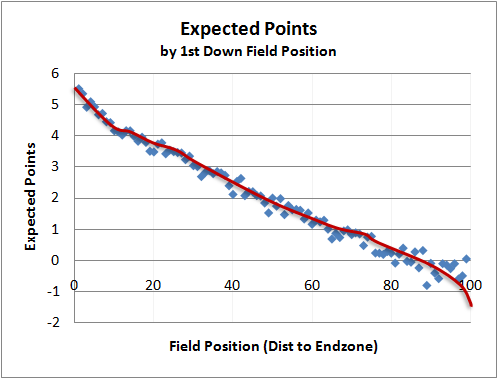I took a clustered simple random sample of 75 games from the 2014 season (resulting in 797 data points of kickoffs (an average of 10.63 per game)), and then broke things down by looking at only the "eligible" kickoffs (those that went into the end zone, i.e. 65 yards (unless a penalty moved the kickoff up or back)). Unfortunately, stats aren't kept in college football to show how deep into the end zone the kick went, so all I know is whether it broke the plane of the goal line.
69.54% of the time the returner took the touchback, resulting in an automatic 25 yards. Of that other 30.46%, the average return was 23.85 yards (I disregarded returns that had penalties on the returning team). ~24 yards a return is actually much closer to the 25 break-even point than I expected.
But what if you take into account the possibility of a momentum-changing 100-yard return for a touchdown? This occurred only 2.07% of the time, thus implying that your expected value from the return (out of the end zone) alone is 0.14 points. However, 1.38% of the time the returner fumbled and turned the ball over, which is a momentum-changing swing in the other direction. Turning the ball over deep in your own territory leads to a very high probability of giving up at least a field goal, and in my sample, 60% of turnovers resulted in a FG, while the other 40% resulted in a TD. Thus, your expected value in these instances is -0.06, which gives a net expected value from touchdowns/turnovers of 0.08.
So does this net expected value of 0.08 make up for the 1.15-yard gap between the average return and the 25-yard touchback? This post (for NFL, but I'm using it as an approximate for NCAAF) shows that the expected points from 1st and 10 at the 25 yard line (75 yards from the end zone) appears to be about 0.2:
But the difference between the 24-yardline and the 25-yardline? Roughly 0.1, which is right on par with the 0.08 net expected value. Thus I have to ultimately conclude that the expected payoff of returning the ball out of the end zone is about the same as conservatively taking the 25-yard touchback. This doesn't mean I still won't jump out of my chair and yell at the TV when the returner does it though.

No comments:
Post a Comment